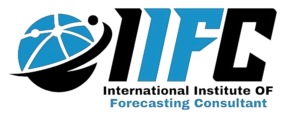Forecasting is the process of making predictions about future events based on historical data and analysis. It is widely used in various fields such as business, economics, finance, weather forecasting, and healthcare. Here are the key points about forecasting:
Key Concepts
-
Purpose:
- Predict future trends and events to make informed decisions.
- Assist in planning, budgeting, and resource allocation.
-
Types of Forecasting:
- Qualitative Forecasting: Based on expert judgment and opinions. Useful when historical data is unavailable.
- Delphi Method: Gathering expert opinions through multiple rounds to reach a consensus.
- Market Research: Surveys and focus groups to gather consumer insights.
- Quantitative Forecasting: Based on numerical data and statistical methods. Useful for time-series data.
- Time Series Analysis: Examining patterns in data over time (e.g., trend, seasonality, cyclic patterns).
- Causal Models: Examining relationships between variables to make predictions (e.g., regression analysis).
- Qualitative Forecasting: Based on expert judgment and opinions. Useful when historical data is unavailable.
-
Data Sources:
- Historical Data: Past records of sales, production, weather, etc.
- Market Trends: Current market conditions and consumer behavior.
- Economic Indicators: GDP, unemployment rates, and other macroeconomic factors.
- Seasonal Data: Recurring patterns related to seasons, holidays, or other cyclical events.
-
Methods and Techniques:
- Moving Average: Smoothing data to identify trends by averaging a fixed number of past observations.
- Exponential Smoothing: Applying decreasing weights to past data points, giving more importance to recent observations.
- ARIMA (AutoRegressive Integrated Moving Average): Combining autoregression, differencing, and moving averages for complex time series.
- Regression Analysis: Modeling the relationship between dependent and independent variables.
-
Applications:
- Business: Sales forecasting, inventory management, and financial planning.
- Economics: Predicting economic growth, inflation rates, and employment levels.
- Finance: Stock market analysis, risk assessment, and portfolio management.
- Weather: Predicting weather patterns, natural disasters, and climate changes.
- Healthcare: Demand forecasting for medical supplies, predicting disease outbreaks, and patient admission rates.
-
Benefits:
- Improved Decision-Making: Provides data-driven insights for better planning.
- Resource Optimization: Ensures efficient use of resources and reduces waste.
- Risk Management: Identifies potential risks and prepares for uncertainties.
- Customer Satisfaction: Helps meet customer demand and manage supply chains effectively.
-
Challenges:
- Data Quality: Accurate forecasting relies on high-quality, comprehensive data.
- Market Volatility: Unpredictable market changes can impact forecast accuracy.
- Complexity: Integrating various data sources and forecasting models can be complex.
- Bias: Human judgment in qualitative methods may introduce bias.
Example Use Cases
-
Retail:
- Predicting product demand to optimize inventory levels and reduce stockouts during peak seasons.
-
Manufacturing:
- Forecasting demand for raw materials to streamline production and minimize lead times.
-
Finance:
- Analyzing historical stock prices to predict future market trends and investment opportunities.
-
Healthcare:
- Estimating the future need for medical supplies and equipment to ensure availability and manage costs.
Forecasting is a critical tool for planning and decision-making across various industries, helping organizations anticipate changes and respond proactively.
Facebook
Twitter
LinkedIn

